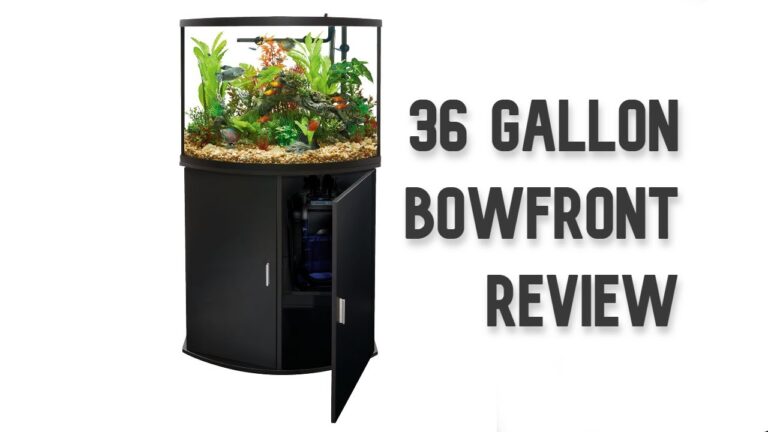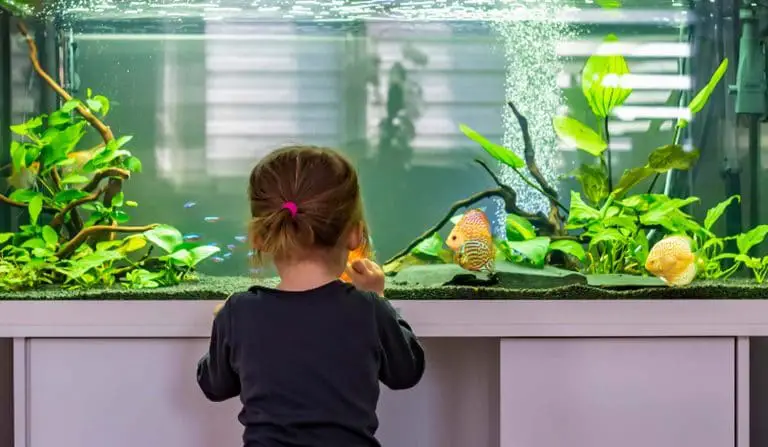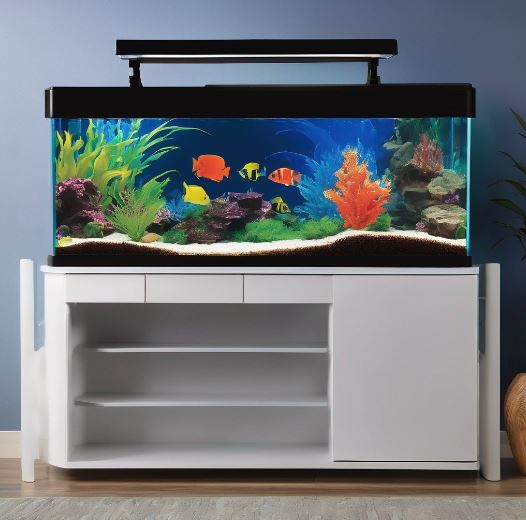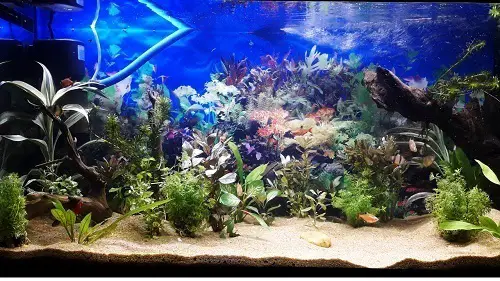5 Gallon vs 10 Gallon Tank: Choosing the Right Size for Your Fish
Fishkeeping is a popular hobby that has been around for centuries. It is a rewarding activity for people of all ages, and it can be a great way to de-stress and relax.
One of the most important decisions that a fishkeeper has to make is the size of the tank.
The size of the tank affects the habitat suitability, water quality, and maintenance requirements of the fish.
When it comes to choosing between a 5 gallon and a 10 gallon tank, there are several factors to consider. While a 5 gallon tank may be more affordable and take up less space, it also has its limitations.
It may be more challenging to maintain proper water parameters and keep them stable in a smaller tank. On the other hand, a 10 gallon tank can hold more fish and is generally easier to maintain.
Ultimately, the decision between a 5 gallon and a 10 gallon tank depends on the fish species, the number of fish, and the available space.
I will compare the sizes, habitat suitability, water quality and maintenance requirements, equipment and accessories, and cost analysis of a 5 gallon and a 10 gallon tank to help you make an informed decision.
- The size of the tank affects the habitat suitability, water quality, and maintenance requirements of the fish.
- A 5 gallon tank may be more affordable and take up less space, but it also has its limitations.
- The decision between a 5 gallon and a 10 gallon tank depends on the fish species, the number of fish, and the available space.
Comparing Sizes
When it comes to choosing between a 5 gallon and a 10 gallon tank, one of the main considerations is size. In this section, we will compare the physical dimensions and weight considerations of the two tank sizes.
Physical Dimensions
A 5 gallon tank is smaller in size compared to a 10 gallon tank. A standard 5 gallon tank measures around 16 inches in length, 8 inches in width, and 10 inches in height.
On the other hand, a standard 10 gallon tank measures around 20 inches in length, 10 inches in width, and 12 inches in height.
This means that the 10 gallon tank has a larger surface area and volume, which can accommodate more fish and decorations.
Weight Considerations
Another important factor to consider when comparing tank sizes is weight. A 5 gallon tank is lighter than a 10 gallon tank, which means it can be placed on a smaller tabletop or desk without the need for a sturdy stand or surface to support it.
However, a 10 gallon tank is heavier and requires a sturdy stand or surface to support it. This is because the weight of the water and decorations in the tank can put a strain on the surface it is placed on.
In conclusion, when comparing the physical dimensions and weight considerations of a 5 gallon and a 10 gallon tank, it is important to consider the space available and the weight capacity of the surface it will be placed on.
While a 5 gallon tank may be more suitable for smaller spaces and lighter surfaces, a 10 gallon tank offers more space and volume for fish and decorations.
Habitat Suitability
When it comes to choosing between a 5 gallon and a 10 gallon tank, one of the most important factors to consider is the habitat suitability. This includes fish species compatibility and plant and decoration potential.
Fish Species Compatibility
A 5 gallon tank is suitable for only a few fish species, such as bettas, guppies, and tetras. These fish are small and do not produce a lot of waste, making it easier to maintain the water quality.
On the other hand, a 10 gallon tank offers more space and is suitable for a wider variety of fish species, including some larger fish like cichlids and angelfish.
It is important to note that not all fish species are compatible with each other, regardless of tank size. It is crucial to do research on the specific fish species and their compatibility before adding them to the tank.
Plant and Decoration Potential
In terms of plant and decoration potential, a 10 gallon tank offers more space and flexibility. It allows for more plants and decorations to be added, creating a more natural and aesthetically pleasing environment for the fish.
A 5 gallon tank, on the other hand, has limited space for plants and decorations, which can make it difficult to create a visually appealing habitat.
It is important to choose the right plants and decorations that are suitable for the fish species and the tank environment.
Some plants require more light, while others prefer shade. It is also important to choose decorations that do not harm the fish or alter the water chemistry.
Overall, when it comes to habitat suitability, a 10 gallon tank offers more options and flexibility compared to a 5 gallon tank.
However, it is important to choose the right fish species, plants, and decorations that are suitable for the tank size and environment.
Water Quality and Maintenance
Frequency of Water Changes
Maintaining good water quality is essential for the health of fish. In smaller tanks like 5-gallon tanks, water quality can deteriorate quickly due to the limited water volume.
Therefore, it is recommended to change the water more frequently in a 5-gallon tank than in a 10-gallon tank. A 5-gallon tank requires a 50% water change every week, while a 10-gallon tank requires a 25% water change every two weeks.
Filtration Requirements
Filtration is necessary to keep the water clean and healthy for fish. A 5-gallon tank requires a filter that can handle the tank’s water volume and keep the water clean.
A hang-on-back (HOB) or sponge filter is ideal for a 5-gallon tank. It is recommended to clean the filter every two weeks to keep it functioning correctly.
A 10-gallon tank requires a filter that can handle the tank’s water volume and provide adequate filtration.
A HOB filter or canister filter is ideal for a 10-gallon tank. It is recommended to clean the filter every month to keep it functioning correctly.
In conclusion, maintaining good water quality is essential for the health of fish. A 5-gallon tank requires more frequent water changes and a smaller filter than a 10-gallon tank.
It is essential to provide adequate filtration to keep the water clean and healthy for fish.
Equipment and Accessories
When it comes to setting up a fish tank, there are several pieces of equipment and accessories that are essential for maintaining a healthy aquatic environment.
Heater Sizing
One of the most important pieces of equipment for any fish tank is a heater. Fish are cold-blooded creatures, which means that they rely on their environment to regulate their body temperature. A heater is necessary to maintain a consistent water temperature for your fish.
The size of the heater you need will depend on the size of your tank. For a 5 gallon tank, a 25-watt heater is typically sufficient. For a 10 gallon tank, a 50-watt heater is usually recommended.
It’s important to choose a heater that is appropriate for the size of your tank, as a heater that is too small will not be able to maintain the desired temperature, and a heater that is too large can overheat the water and harm your fish.
Lighting Needs
Lighting is another important consideration when setting up a fish tank. In addition to providing illumination for your fish, lighting also helps to promote the growth of plants and algae in the tank.
For a 5 gallon tank, a single LED light fixture is usually sufficient. For a 10 gallon tank, you may need two LED fixtures to adequately light the entire tank.
It’s important to choose a light fixture that is appropriate for the size of your tank, as a fixture that is too small will not provide enough light, and a fixture that is too large can cause excessive algae growth.
To the size of the light fixture, it’s also important to consider the color temperature of the bulbs. Most aquarium lighting fixtures come with bulbs that have a color temperature of around 6500K, which is similar to natural daylight.
This color temperature is ideal for promoting plant growth and enhancing the colors of your fish.
Overall, choosing the right equipment and accessories for your fish tank is essential for maintaining a healthy aquatic environment.
By selecting the appropriate heater and lighting, you can help ensure that your fish and plants thrive in their new home.
Cost Analysis

Initial Setup Expense
When it comes to setting up a fish tank, the initial cost can vary depending on the size of the tank. A 5-gallon tank is generally less expensive than a 10-gallon tank.
However, the cost may vary depending on the brand, quality, and features of the tank.
In addition to the cost of the tank, there are other initial expenses to consider. These include:
- Filter
- Heater
- Thermometer
- Substrate
- Decorations
- Fish food
- Water conditioner
- Test kit
While the cost of these items may be similar for both a 5-gallon and 10-gallon tank, the quantity needed for a 10-gallon tank may be higher, resulting in a slightly higher initial cost.
Long-Term Financial Commitment
The long-term financial commitment of owning a fish tank includes the cost of electricity, water, and maintenance.
A 10-gallon tank requires more water and electricity to maintain than a 5-gallon tank. However, the difference in cost may not be significant.
The cost of maintenance includes the cost of replacing the filter media, water changes, and replacing decorations or equipment as needed.
The cost of maintenance may be slightly higher for a 10-gallon tank due to the larger size, but again, the difference may not be significant.
Overall, while a 5-gallon tank may have a lower initial cost, the long-term financial commitment of a 10-gallon tank may not be significantly higher.
It is important to consider both the initial cost and long-term financial commitment when deciding between a 5-gallon and 10-gallon tank.





